Hot off the presses is our 42nd catalog, Of Two Minds: Artists Who Do More Than One of a Kind. The 76-page full-color volume features 87 images of work by 25 international artists in textiles, glass and mixed media. The introductory essay, Transcendence: Language, Universality and the Plastic Arts was written by Elisabeth R. Agro, the Nancy M. McNeil Associate Curator of American, Modern and Contemporary Craft and Decorative Arts at the Philadelphia Museum of Art. “Artists retain their own language of making and identity within but share a universal nonverbal language that communicates formation, movement, attitude and meaning,” she writes. In Of Two Minds: Artists Who Do More Than One of a Kind, “[a]rt and language are intertwined as conveyances of communication.” Order a copy for $35.00 plus tax and shipping from browngrotta arts at http://browngrotta.com/Pages/c38.php.

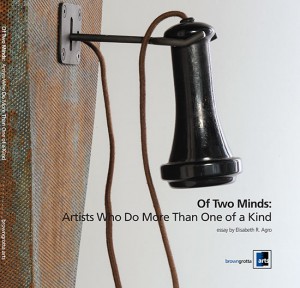
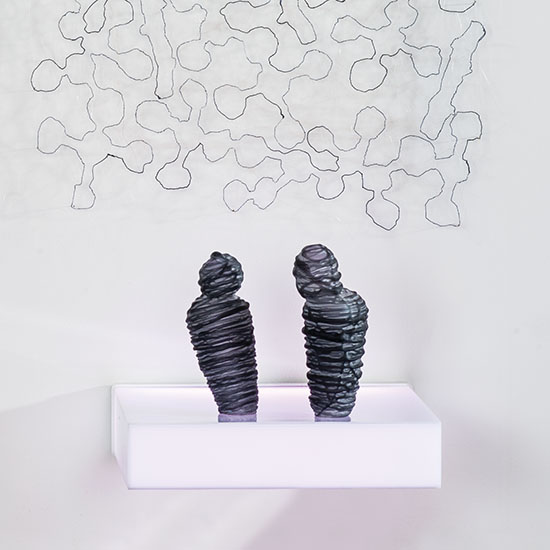
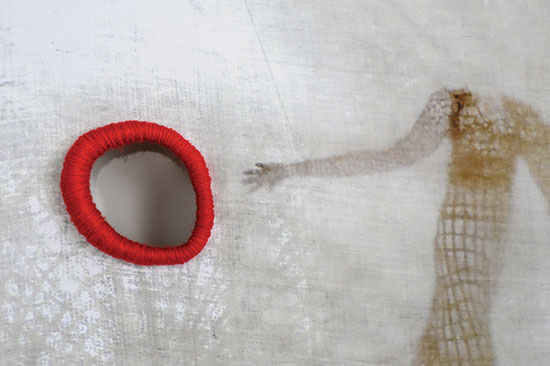
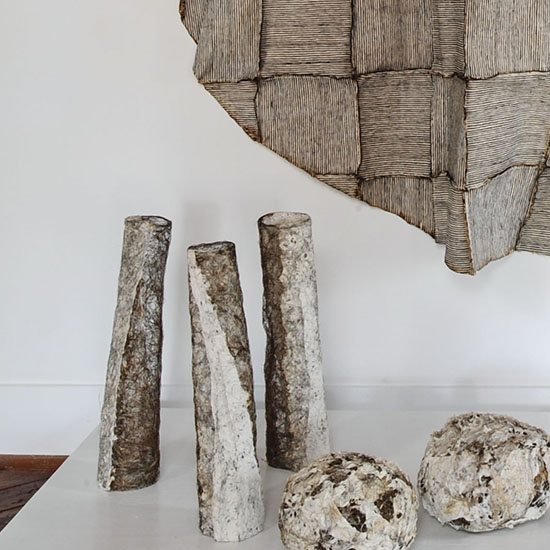
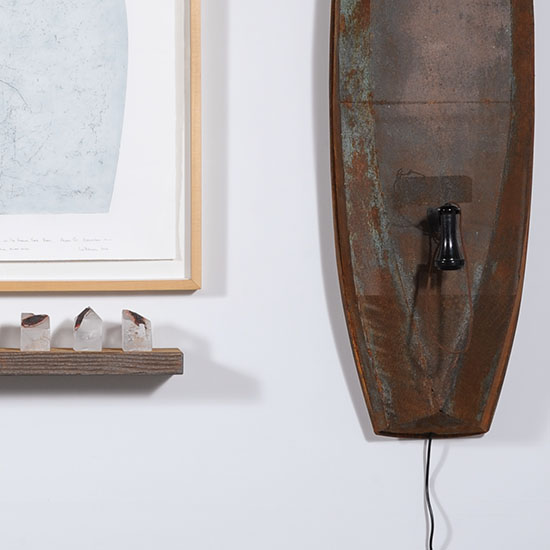
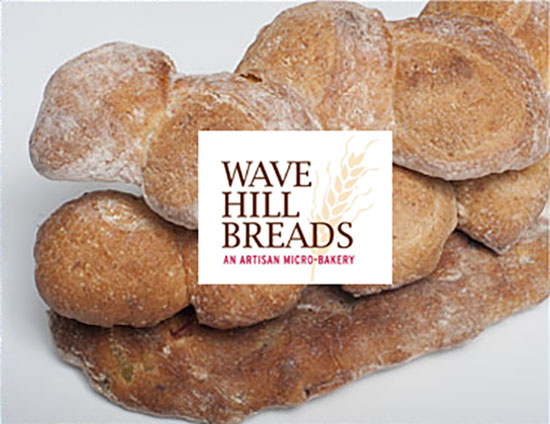
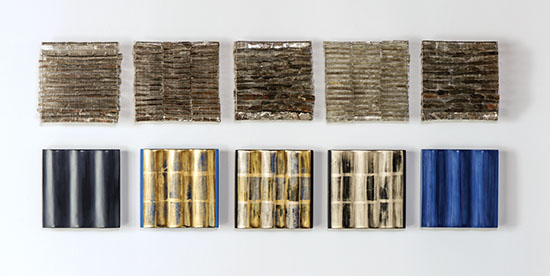
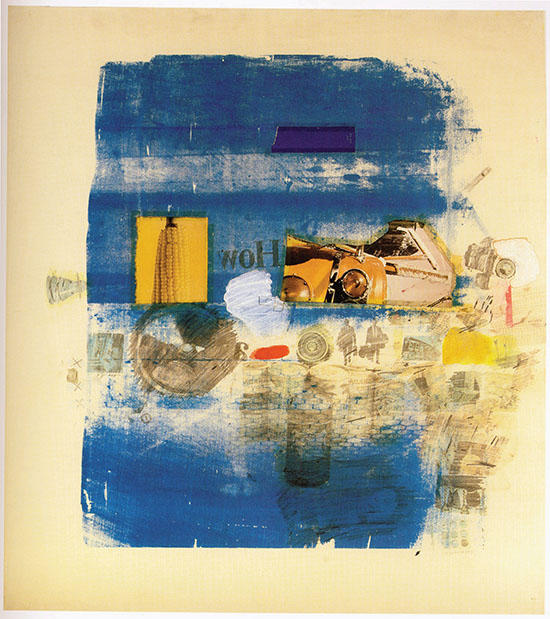
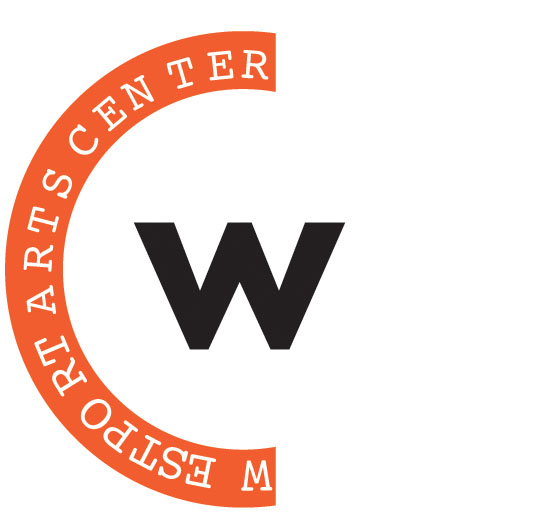













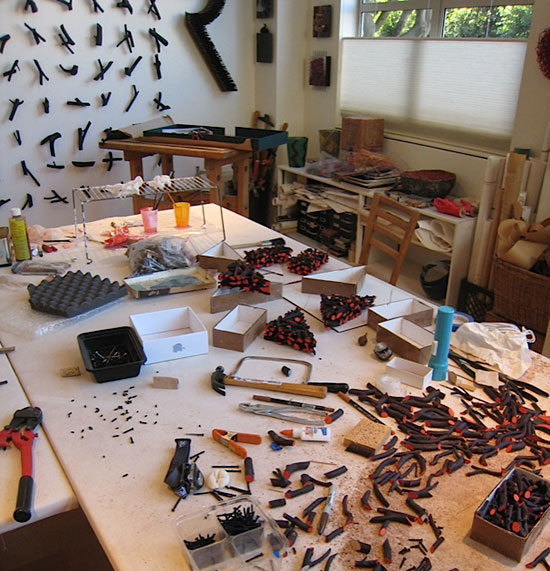
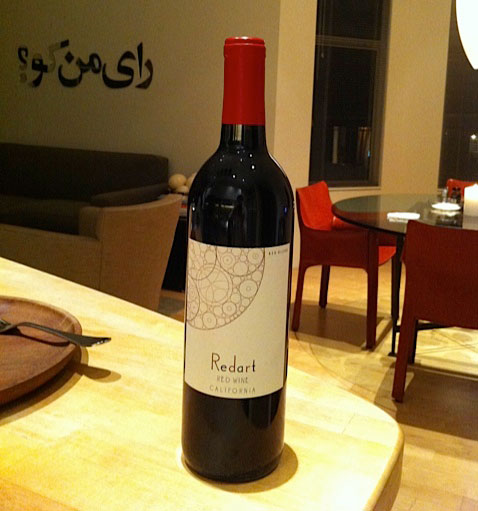
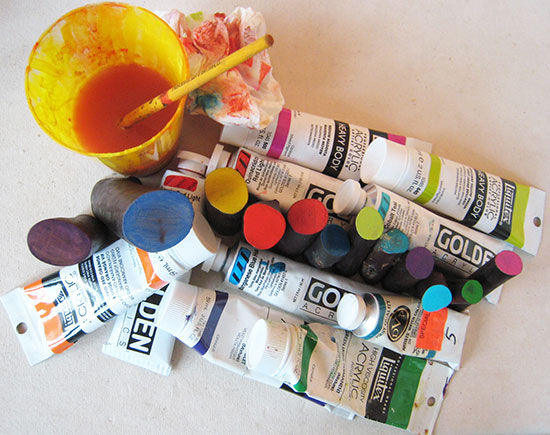
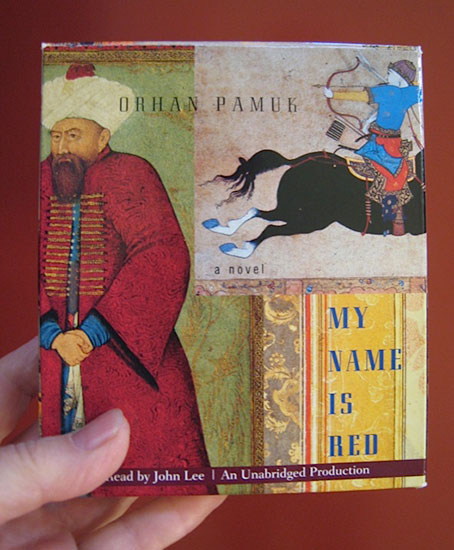

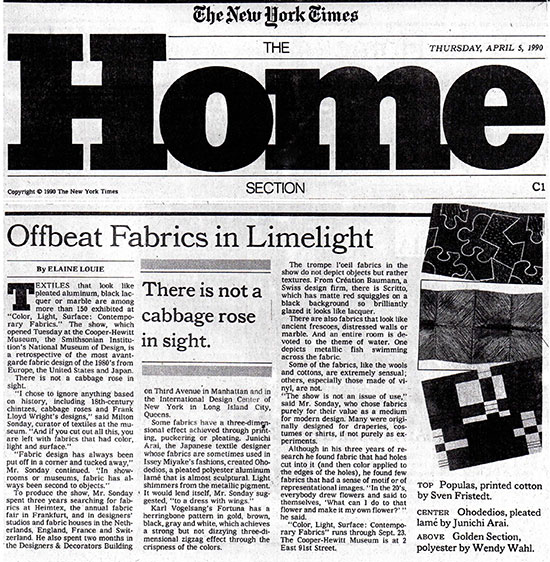

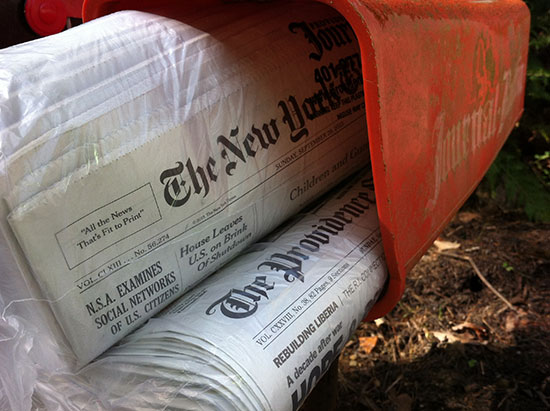
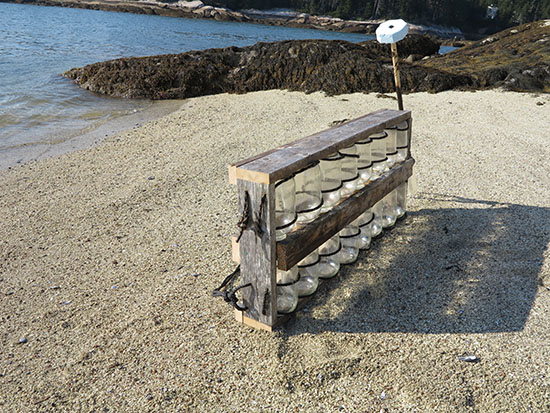
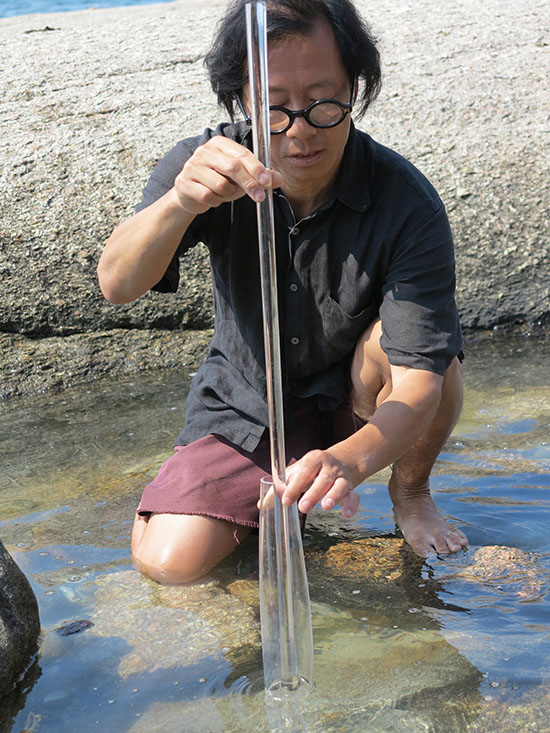
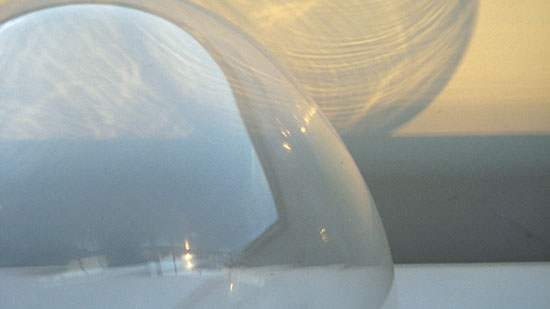
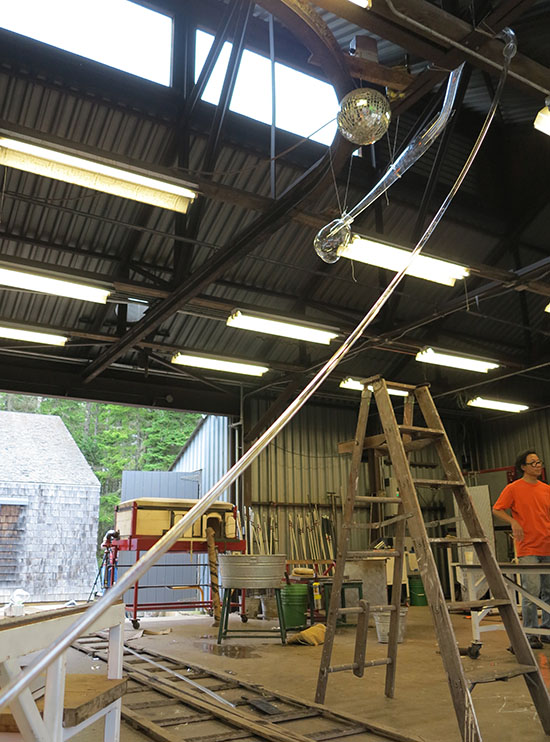
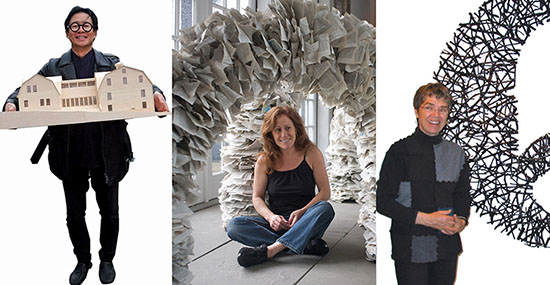
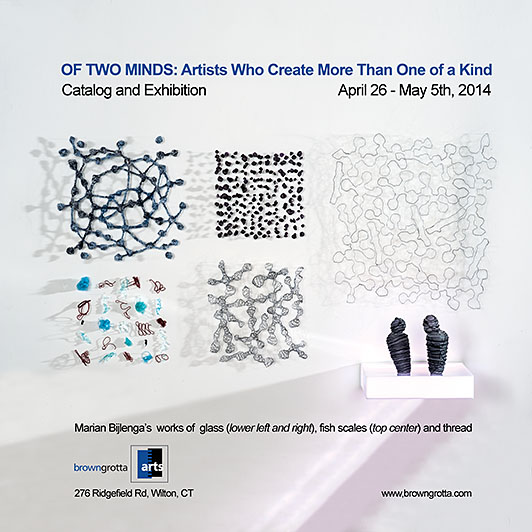
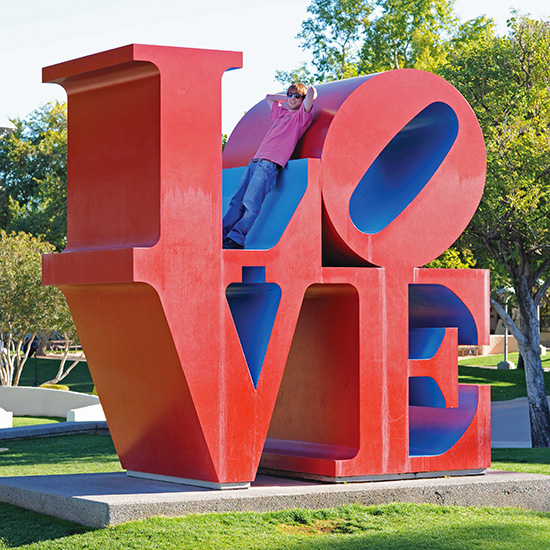
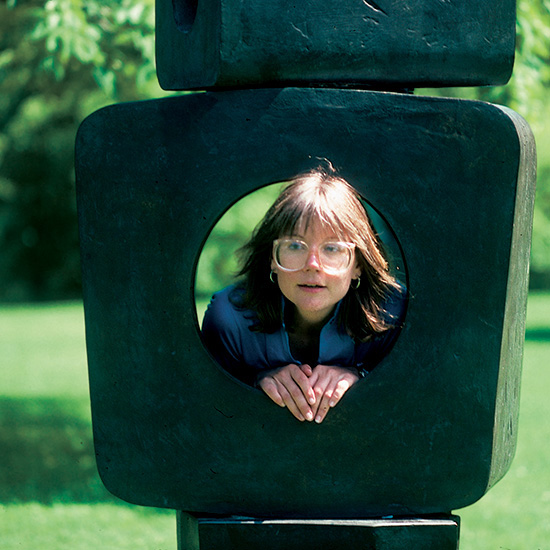
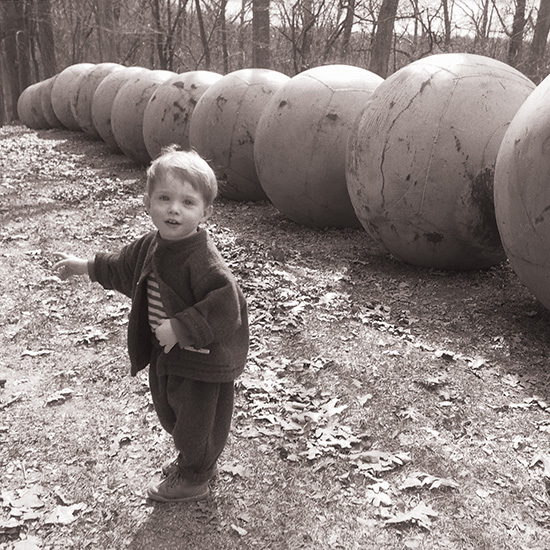
Some Observations: On Light and Air
Recently I visited the Los Angeles County Museum of Art specifically to spend time immersed in the imagination of James Turrell whose retrospective covers fifty years of work exploring light, sky, perception, color, shape and architecture. http://www.lacma.org/art/exhibition/james-turrell-retrospective. The meditative quality of this exhibition encourages the viewer to be a considered observer and allow what they see and perceive to be altered by their physical experience with the work. Ultimately the transformative and ephemeral qualities of light exist in the mind of each person. The artist gives us the opportunity to bathe our senses in illusion and reflection.
The next day on a non-stop eastbound flight traveling in the morning from Los Angeles to Boston I was seated on the north side of the airplane and could view the magnificent snow covered Rocky Mountains below rising from the earth with the suggestion of a world without grief.
photo by Wendy Wahl
In the minutes that followed I found myself focused on the carbon footprint that air travel leaves and thinking about the best way to balance my personal footprint. Knowing for the moment “I am where I am” my gaze returned to the framed light as we swiftly moved above the fruited plains. I watched until somewhere over the Great Lakes the image through the oval-edged window changed into another remarkable illuminated landscape.
photo by Wendy Wahl
As a commercial airline passenger for over four decades I have encountered a wide range of situations and had experiences that touch on almost every imaginable emotion. Each flight has a unique dimension heightened by the sounds, sights, smells and physical proximity of the other passengers in a tightly enclosed space. The curious activity of moving at fast speeds from one environment to another, around and about what has become a very small sphere in a short period of time, stimulates thought about place, perception and the possibility of portals. Having flown on Pan Am, Continental, Delta, American Airlines, United Airlines, Laker Airways, Peoples Express, Southwest, British Airways, Hawaiian Air, TWA, Qantas, Virgin Australia, Aero Mexico, China Air, Alitalia, Air India, Lufthansa, Air France, JetBlue and a number of puddle jumpers – I’m feeling that of all these, Virgin America has created an illusion of a different sort for air travelers through the use of color and light.
Wendy Wahl
March 2014